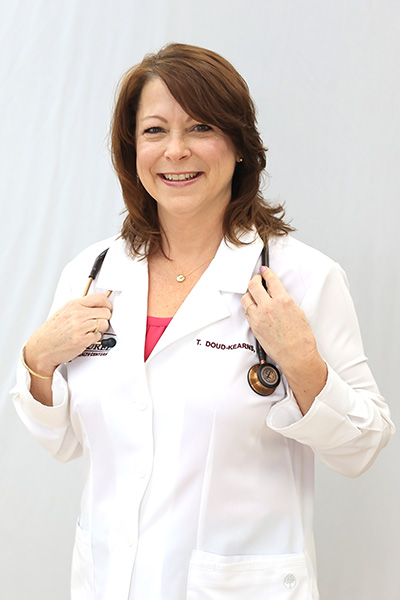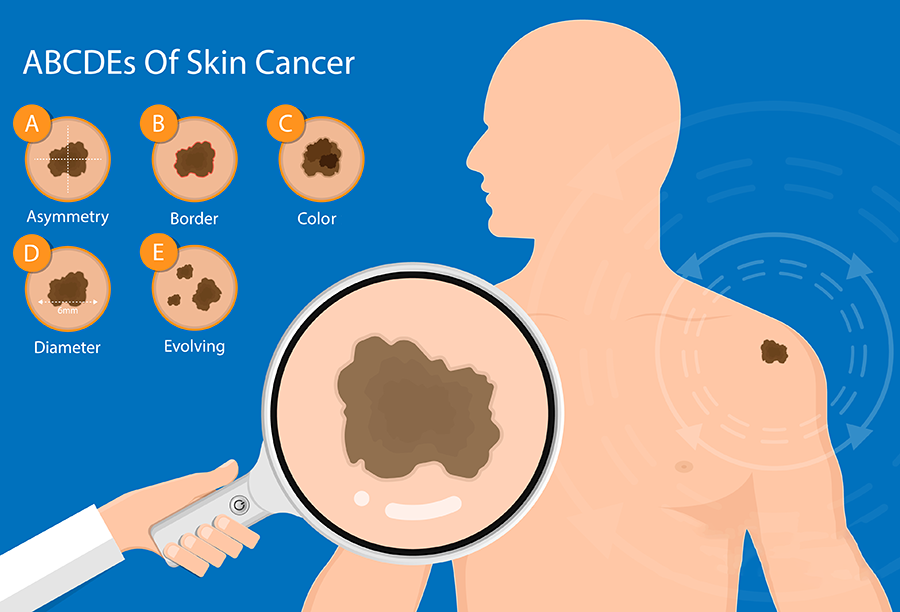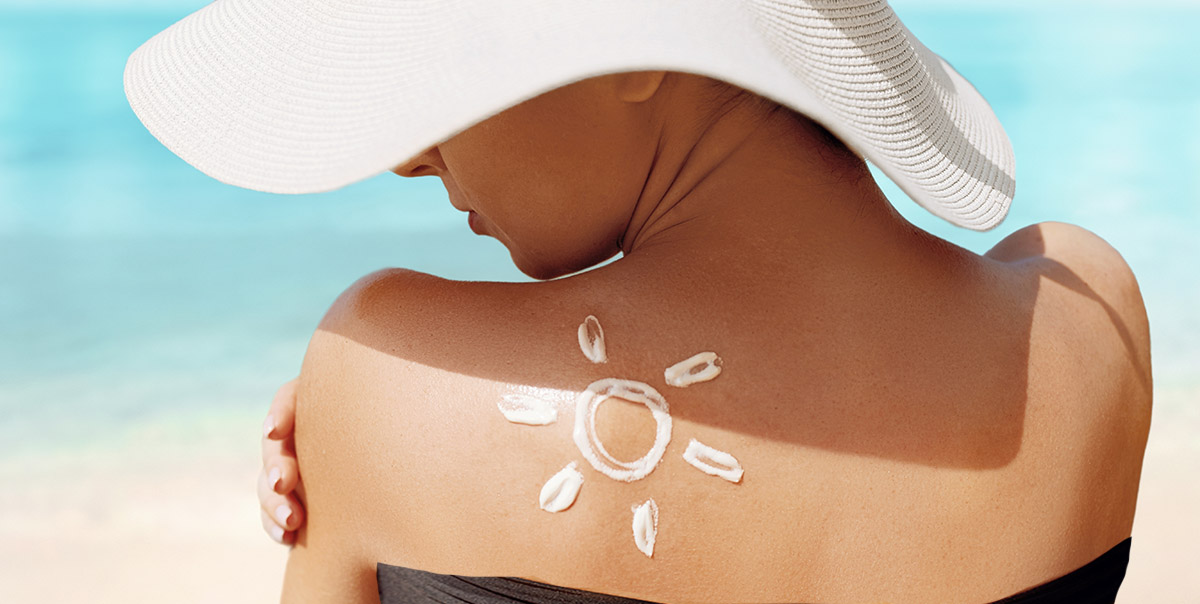By Kristy Warren
Summer means fun in the sun: picnics, backyard fun, camping, and trips to the pool. Spending time outdoors is a great way to stay active and get your Vitamin D, but too much sun can be harmful, resulting in painful sunburns, skin damage, and increased risk of developing skin cancer. Whether you're hiking, camping, grilling, swimming, gardening, strolling the park, relaxing on the beach, or enjoying outdoor sports, take a moment to protect your skin.

Tina Doud-Kearns, a certified registered nurse practitioner with the Blossburg Laurel Health Center, is passionate about dermatology and keeping patients' skin healthy.
One in five people will develop skin cancer in their lifetime. Protecting your skin, being mindful about your sun exposure, and getting any unusual skin changes promptly checked are key in the fight against skin cancer.
Good skin care protection is especially important when dealing with the sizzling summer sun, when UV rays are at their strongest. So, how can you make sure you and your family enjoy the summer safely?
Our skin is our largest organ, which means there's a lot of it to protect in the sun! Skin cancer is the most common cancer in the United States, and sun exposure is a major risk factor in developing it. Tina recently sat down with the Homepage Network to share how we can best protect our skin while enjoying the outdoors and when to talk to your doctor about a change in your skin. Watch the short video below for quick tips on staying safe in the summer sun.
GETTING YOUR VITAMIN D SAFELY
Vitamin D helps us maintain strong, healthy bones and muscles. While sunlight plays an important role in helping us make Vitamin D, we don't need to tan (or burn!) to receive that benefit. It doesn't take much sun exposure to maintain optimal levels of Vitamin D, and studies show we can still make Vitamin D while wearing sunscreen or sitting in the shade, as some UV light always reaches our skin.
Low Vitamin D levels are more common in the upper northern hemisphere, especially during the winter months when people spend less time outdoors. Supplements can be used to help maintain Vitamin D levels during these months and by people who need to limit their sun exposure, who burn easily, or who have other sun-related sensitivities, such as medications that make skin more reactive to sunlight.
SUN SAFETY TIPS
The best way to avoid skin cancer is to prevent it. Below are protective measures you can take to avoid excessive sun exposure and lower your skin cancer risk:
- Wear broad-spectrum sunscreen to protect yourself from both UVA and UVB sun waves.
- Choose a sunscreen with a sun protection factor (SPF) of 30 or higher.
- Reapply sunscreen every 2 hours, after swimming, or after sweating excessively. No sunscreen is waterproof, and water or sweat-resistant sunscreens wear off over time. Water-resistant sunscreens often label how long it typically takes them to wash off (e.g., 60 - 90 minutes).
- Avoid the sun during its peak intensity, typically 10 am – 3 pm, when the sun's rays are at their strongest.
- Even if you aren’t planning to be out in the sun for an extended period, try using a moisturizer, primer, or makeup with SPF for everyday protection.
- Wear a hat, sunglasses, sunscreen, and breathable, lightweight clothing; wide-brimmed hats, shades, long sleeves, and pants provide extra protection for your skin and eyes. When reading labels, UPF refers to a fabric’s sun-blocking ability. Skin protection is still important in the colder months: if you'll be skiing, shoveling, or sledding, wear sunscreen and sunglasses or ski goggles to protect your skin and eyes from the sun reflecting off the snow.
BUT WHAT ABOUT...
- The weather? You can still get sunburnt on a cloudy day and in the winter! That's because UV light is still present even when you are not directly in the sun. It's important to protect your skin year-round.
- Sensitive skin? Try using a sunscreen with zinc or titanium oxide, which are tolerated well even by easily irritated skin. Look for items labeled as physical sunscreens, which means the product is designed to sit on top of your skin to create a protective barrier that reflects light (whereas chemical filter sunscreens soak into the top layer of skin to create a barrier that aborbs and diffuses light).
- Your tan? Get that glow without the risk. Skip tanning beds and intentional sunning. If you love the look of a summer tan, use a tinted moisturizer, foundation, lotion, or bronzer to give your skin a tan glow without the harmful rays and lasting skin damage.
- A change in your skin? Don’t wait, talk to your health provider about any changes in your skin lasting longer than two weeks.
SPOTTING SKIN CANCER
There are roughly one million new cases of skin cancer every year. The three main types of skin cancer are:
- Basal cell carcinoma (pearly, dome-shaped bumps)
- Squamous cell carcinoma (rough, tender, red bumps)
- Melanoma (atypical or changing moles)
The most common warning sign for any skin cancer is a change in the appearance of a skin lesion or mole, such as changes in:
- Asymmetry
- Border
- Color or texture
- Diameter
- Elevation & Evolution

WHEN TO CALL YOUR PROVIDER
Skin lesions / changes lasting more than two weeks and any change in your mole's appearance, including bleeding, persistent itching, or crusting, should be evaluated by a healthcare provider. The Laurel Health Centers are here to help you identify and manage any changes in your skin.
If you have any questions or concerns about your skin, call the Laurel Health Centers today at 1-833-LAURELHC (1-833-528-7354) and select the location of your choice.
To make an appointment with Tina Doud-Kearns at our Blossburg LHC, call 570-638-2174.
